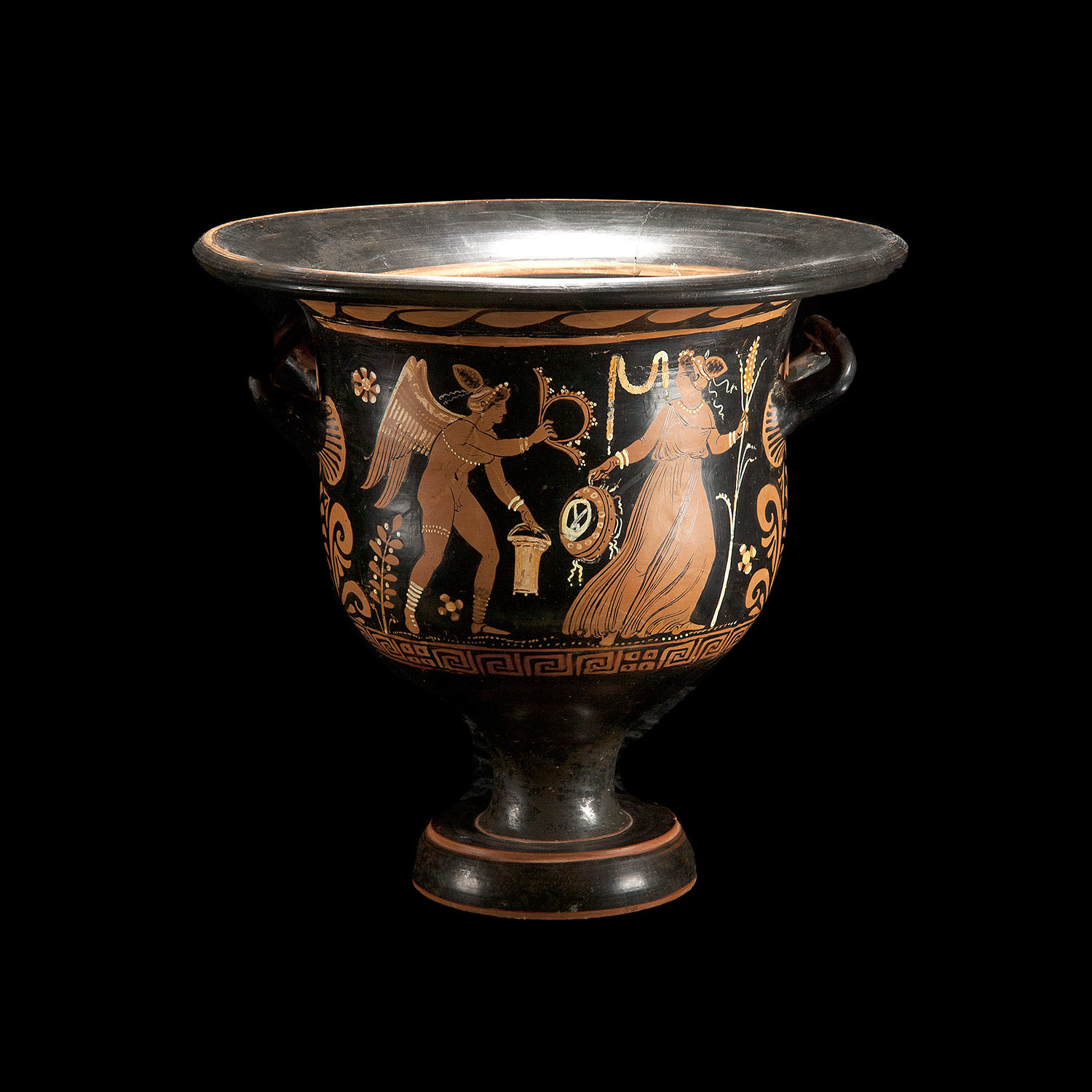The New Testament begins in a strange way. Let us remember, please, that the New Testament is the Biography of One Who has been a Hero to the people of God all their lives. He has become their God. Lets us see how the Book devoted to the description of the life and doings of this Hero begins, taken from the corrected American Revised Version, in order to enable us to have almost the Greek before us.
The book of the generation of Jesus Christ, the son of David, the son of Abraham, Abraham begat Isaac; and Isaac begat Jacob; and Jacob begat Judah and his brethren.
And thus it goes on for forty names; most of them you never hear of again in the NT, and hardly even hear of them in the Old. Well, that is a queer kind of send-off. The genealogy of The Lord Jesus Christ is in the first chapter of Mathew. The first seventeen verses consist essentially of three separate, of rather divided accounts of Israel. The first few verses deal with Abraham, the father of the Jewish nation, until David, who became their King, and in whom was promised the Messiah to come. The second period is from David to the Captivity, when God cast off His chosen people for reasons of His Own, and ceased certain dealings with them. The third division is from the Captivity to The Messiah. So it is essentially a genealogy history of God’s dealings with His People.
The vocabulary to the first half of this genealogy of the first eleven verses has 49 words. 49 happens to be 7 x 7. It has two separate numeric features. First, it is a multiple of 7; second, the sum of it’s factors is 14 twice 7. Of these 49 words 28 are, or 7 x 4 begins with a vowel, and 21, or 7 x 3 begins with a consonant. That is to say, the words of the vocabulary are divided into words beginning with a vowel and words beginning with a consonant, not at random, but by sevens. So we have four features of sevens. The 49 words of the vocabulary have 266 letters. This is a multiple of 7, i.e., 38 x 7, but that is not all. The sum of the figures of 266 is 14, or twice seven, and the sum of the factors 7 x 2 x 19 is also a multiple of seven; and we have three additional features of seven.
I have said that the 49 words in the vocabulary are divided between vowels and consonants by seven. The 266 letters of the vocabulary follow exactly the same plan, namely, 140 of them, or 7 x 20, are vowels, and 126 or 18 x 7 are consonants.
There is only one chance in a million that these things could have happened accidentally, but if that where all we might say – “Well, a strange thing may happen once in a while, even though the chance is only one in a millionâ€; but is so happens that of those 49 words, 42 are nouns 6 x 7, 7 are not nouns. Of the 42 nouns 35, 7 x 5 are proper names the other 7 are common names. Of the 35 proper names 28 are male ancestors of the Lord Jesus Christ. This presents not only a set of divisions of seven, but it diminishes the chances 343 times. In other words, this scheme alone shows that some mathematical artists, for some reason, sat down and said to himself – “I will construct that small portion of genealogy in such a way that when I get through, all the remarkable features of 7 appear.†I tried to sit down and figure out how long it would have taken Matthew to write that particular piece of genealogy, and I reckoned that it would have taken, if he did nothing else, and did not sleep or eat or do any business or see any visitors, a good month to do that. You will see soon that it would have been impossible for him to do it at all, because there are features that make it impossible.
The second half of the first chapter of Matthew, containing the account of the Birth of our Lord has 161 words – 23 x 7. Those words occur in 105 forms – 15 x 7. The vocabulary to that passage contains 77 words – 11 x 7, and the same features I described to you before can be found here again. In additions to the vast structure of numerics of sevens in that portion of the chapter, there is also this. The angle happens to make a speech to Joseph and he uses 28 words of the 77 of the vocabulary, namely 7 x 4, and he uses 35, or 7 x5, of the 105 forms. The angel has a little scheme of seven all to himself separate from the rest. The two have each a separate scheme, and the whole portion is constructed on that plan. I could spend a good hour in expounding to you the numerics of that passage alone.
We come to the second chapter of Matthew. It is a longer chapter. The number of vocabulary words is a multiple of seven. The number of forms is a multiple of seven. There are several paragraphs in the second chapter Matthew, and every paragraph has it’s own numerics, and yet the entire chapter is all one mathematical unit on the same plan as brought before you above.
I realise friends that the subject is novel, and no wonder you have a little difficulty hearing it.
I suppose most of you know that the last twelve verses of Mark have been disputed by many scholars; the best Editors of the New Testament actually mark them as an interpolation. But I clearly found that these verses are a genuine part of the Word of God, and constructed in exactly the same way. I have printed the proof in a monograph, with the vocabularies and concordances. Any scholar who knows Greek, with a little patience can thus verify for themselves everything I ther say. There is not a single paragraph in the Gospel of Matthew that is not constructed in the same way as the passages already examined before you. It would have taken Matthew over a thousand years to have constructed the Gospel on these lines himself; even assuming it would have been at all possible for him to do so. We happen to know that Matthew could not have written his Gospel before the Cross of Christ, in A.D. 30 and he could not have written it after the destruction of Jerusalem, in A.D. 70; if it had been written after the destruction of Jerusalem he would have added a note about it in Chapter 24, where it is foretold. We have thus evidence that Matthew, at most, had only about 40 years in which to write the Gospel. Yet 40 years, without anyone having an idea of it for some 1,900 years we find a most elaborate numeric scheme wrought in his Book. Well, we can say that it is a marvel, and Matthew is a great mathematician and a wonderful artist; how he accomplished it we do not know, but he did. But Mark shows exactly the same phenomena! I have already told you that in analyzing the last verses of the Gospel of Mark you will find a most wonderful numeric structure in it.
The number of words in the last 12 verses of Mark is 175, or 7 x 25. Of these, verses 9-11 a separate division by themselves, have 35 words or 5 x 7. Verses 7-18 have 105 words – 15 x7; verses 19-20 have 35 words - 5 x 7. The number of forms is 133 – 19 x 7. The sum of the figures of 133 is 7. Of these 112 occur once, that is a multiple of 7. The vocabulary has 98; 7 x 7 x 2, and so on. I could write a long account of the different numerics that are contained in that one little passage* (* NB: Which he has done, I have a copy, its 60 pages long.)
So we have not only a great mathematical artist in Matthew, but an additional one like Mark.
But Luke is constructed in exactly the same way. Every paragraph, every sentence, can be shown definitely to be constructed in the same way; and when you come to John, James, Peter. Jude, Paul, you find the same. So here we have eight marvelous mathematicians, each of whom doing his work in that wonderful way, which would require at least 1000 years to do (each Book). Humanly speaking, this is impossible.
But this would not, in itself, be exhaustive, although the argument is conclusive. When however, you take the whole Bible you find the same. I made my analysis of the word “Moses†in the whole Bible, in the Old and new Testaments. It occurred in 31 books 847 times – 7 x 11 x 11. It begins it Exodus, and occurs in Revelation once. Two distinct schemes run through the different books, of sevens and elevens.
Query: Did Moses, when he wrote Exodus, Leviticus, Numbers and Deuteronomy, leave a memorandum to Joshua saying that he had decided that in a book that would be written 1,600 years after his death his name should occur 847 times? And Joshua, when he wrote about Moses, was to be sure to use his name in such a manner that it should occur a certain number of times, and leave a note about it to Samuel, etc., and Samuel would have to hand it down to Ezra; finally to Isaiah and to John! John uses it only once. The scheme is not complete until John, 1600 years afterwards completes it. Can any sane man believe that man could have done this?
By Ivan Panin (who is not me by the way, Im just his biggest fan)
The book of the generation of Jesus Christ, the son of David, the son of Abraham, Abraham begat Isaac; and Isaac begat Jacob; and Jacob begat Judah and his brethren.
And thus it goes on for forty names; most of them you never hear of again in the NT, and hardly even hear of them in the Old. Well, that is a queer kind of send-off. The genealogy of The Lord Jesus Christ is in the first chapter of Mathew. The first seventeen verses consist essentially of three separate, of rather divided accounts of Israel. The first few verses deal with Abraham, the father of the Jewish nation, until David, who became their King, and in whom was promised the Messiah to come. The second period is from David to the Captivity, when God cast off His chosen people for reasons of His Own, and ceased certain dealings with them. The third division is from the Captivity to The Messiah. So it is essentially a genealogy history of God’s dealings with His People.
The vocabulary to the first half of this genealogy of the first eleven verses has 49 words. 49 happens to be 7 x 7. It has two separate numeric features. First, it is a multiple of 7; second, the sum of it’s factors is 14 twice 7. Of these 49 words 28 are, or 7 x 4 begins with a vowel, and 21, or 7 x 3 begins with a consonant. That is to say, the words of the vocabulary are divided into words beginning with a vowel and words beginning with a consonant, not at random, but by sevens. So we have four features of sevens. The 49 words of the vocabulary have 266 letters. This is a multiple of 7, i.e., 38 x 7, but that is not all. The sum of the figures of 266 is 14, or twice seven, and the sum of the factors 7 x 2 x 19 is also a multiple of seven; and we have three additional features of seven.
I have said that the 49 words in the vocabulary are divided between vowels and consonants by seven. The 266 letters of the vocabulary follow exactly the same plan, namely, 140 of them, or 7 x 20, are vowels, and 126 or 18 x 7 are consonants.
There is only one chance in a million that these things could have happened accidentally, but if that where all we might say – “Well, a strange thing may happen once in a while, even though the chance is only one in a millionâ€; but is so happens that of those 49 words, 42 are nouns 6 x 7, 7 are not nouns. Of the 42 nouns 35, 7 x 5 are proper names the other 7 are common names. Of the 35 proper names 28 are male ancestors of the Lord Jesus Christ. This presents not only a set of divisions of seven, but it diminishes the chances 343 times. In other words, this scheme alone shows that some mathematical artists, for some reason, sat down and said to himself – “I will construct that small portion of genealogy in such a way that when I get through, all the remarkable features of 7 appear.†I tried to sit down and figure out how long it would have taken Matthew to write that particular piece of genealogy, and I reckoned that it would have taken, if he did nothing else, and did not sleep or eat or do any business or see any visitors, a good month to do that. You will see soon that it would have been impossible for him to do it at all, because there are features that make it impossible.
The second half of the first chapter of Matthew, containing the account of the Birth of our Lord has 161 words – 23 x 7. Those words occur in 105 forms – 15 x 7. The vocabulary to that passage contains 77 words – 11 x 7, and the same features I described to you before can be found here again. In additions to the vast structure of numerics of sevens in that portion of the chapter, there is also this. The angle happens to make a speech to Joseph and he uses 28 words of the 77 of the vocabulary, namely 7 x 4, and he uses 35, or 7 x5, of the 105 forms. The angel has a little scheme of seven all to himself separate from the rest. The two have each a separate scheme, and the whole portion is constructed on that plan. I could spend a good hour in expounding to you the numerics of that passage alone.
We come to the second chapter of Matthew. It is a longer chapter. The number of vocabulary words is a multiple of seven. The number of forms is a multiple of seven. There are several paragraphs in the second chapter Matthew, and every paragraph has it’s own numerics, and yet the entire chapter is all one mathematical unit on the same plan as brought before you above.
I realise friends that the subject is novel, and no wonder you have a little difficulty hearing it.
I suppose most of you know that the last twelve verses of Mark have been disputed by many scholars; the best Editors of the New Testament actually mark them as an interpolation. But I clearly found that these verses are a genuine part of the Word of God, and constructed in exactly the same way. I have printed the proof in a monograph, with the vocabularies and concordances. Any scholar who knows Greek, with a little patience can thus verify for themselves everything I ther say. There is not a single paragraph in the Gospel of Matthew that is not constructed in the same way as the passages already examined before you. It would have taken Matthew over a thousand years to have constructed the Gospel on these lines himself; even assuming it would have been at all possible for him to do so. We happen to know that Matthew could not have written his Gospel before the Cross of Christ, in A.D. 30 and he could not have written it after the destruction of Jerusalem, in A.D. 70; if it had been written after the destruction of Jerusalem he would have added a note about it in Chapter 24, where it is foretold. We have thus evidence that Matthew, at most, had only about 40 years in which to write the Gospel. Yet 40 years, without anyone having an idea of it for some 1,900 years we find a most elaborate numeric scheme wrought in his Book. Well, we can say that it is a marvel, and Matthew is a great mathematician and a wonderful artist; how he accomplished it we do not know, but he did. But Mark shows exactly the same phenomena! I have already told you that in analyzing the last verses of the Gospel of Mark you will find a most wonderful numeric structure in it.
The number of words in the last 12 verses of Mark is 175, or 7 x 25. Of these, verses 9-11 a separate division by themselves, have 35 words or 5 x 7. Verses 7-18 have 105 words – 15 x7; verses 19-20 have 35 words - 5 x 7. The number of forms is 133 – 19 x 7. The sum of the figures of 133 is 7. Of these 112 occur once, that is a multiple of 7. The vocabulary has 98; 7 x 7 x 2, and so on. I could write a long account of the different numerics that are contained in that one little passage* (* NB: Which he has done, I have a copy, its 60 pages long.)
So we have not only a great mathematical artist in Matthew, but an additional one like Mark.
But Luke is constructed in exactly the same way. Every paragraph, every sentence, can be shown definitely to be constructed in the same way; and when you come to John, James, Peter. Jude, Paul, you find the same. So here we have eight marvelous mathematicians, each of whom doing his work in that wonderful way, which would require at least 1000 years to do (each Book). Humanly speaking, this is impossible.
But this would not, in itself, be exhaustive, although the argument is conclusive. When however, you take the whole Bible you find the same. I made my analysis of the word “Moses†in the whole Bible, in the Old and new Testaments. It occurred in 31 books 847 times – 7 x 11 x 11. It begins it Exodus, and occurs in Revelation once. Two distinct schemes run through the different books, of sevens and elevens.
Query: Did Moses, when he wrote Exodus, Leviticus, Numbers and Deuteronomy, leave a memorandum to Joshua saying that he had decided that in a book that would be written 1,600 years after his death his name should occur 847 times? And Joshua, when he wrote about Moses, was to be sure to use his name in such a manner that it should occur a certain number of times, and leave a note about it to Samuel, etc., and Samuel would have to hand it down to Ezra; finally to Isaiah and to John! John uses it only once. The scheme is not complete until John, 1600 years afterwards completes it. Can any sane man believe that man could have done this?
By Ivan Panin (who is not me by the way, Im just his biggest fan)





